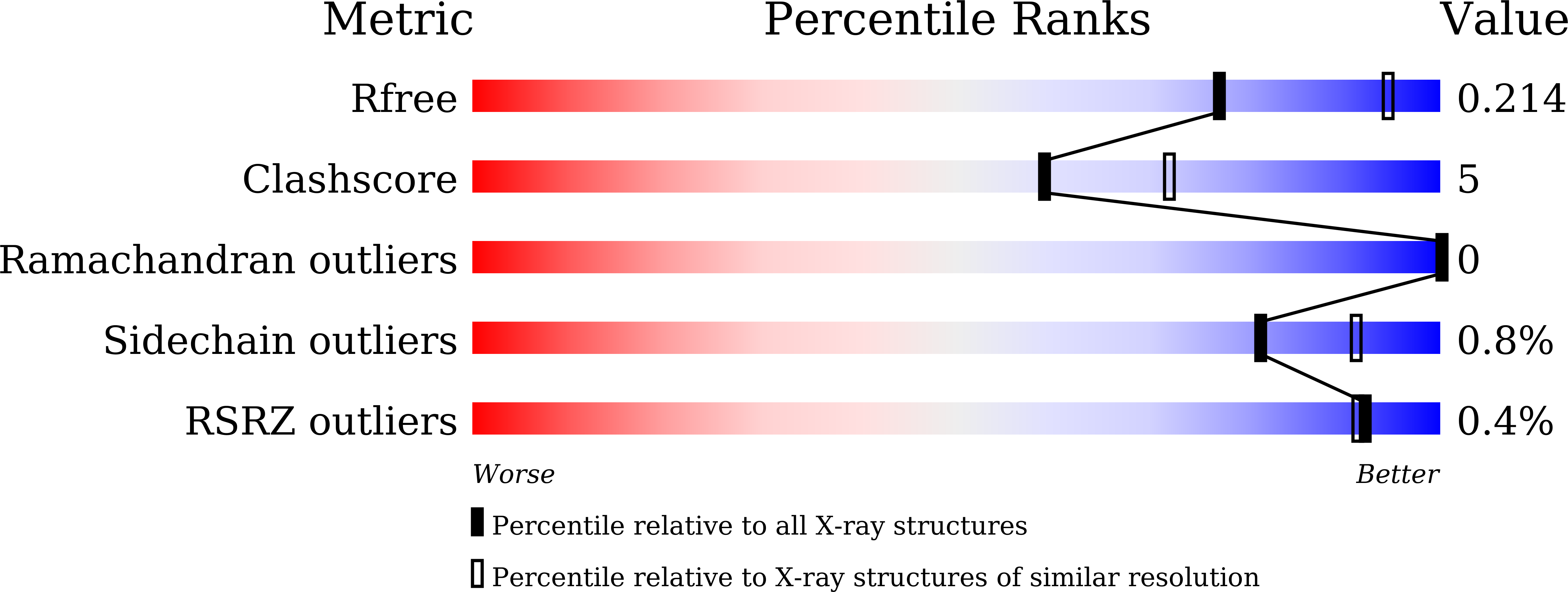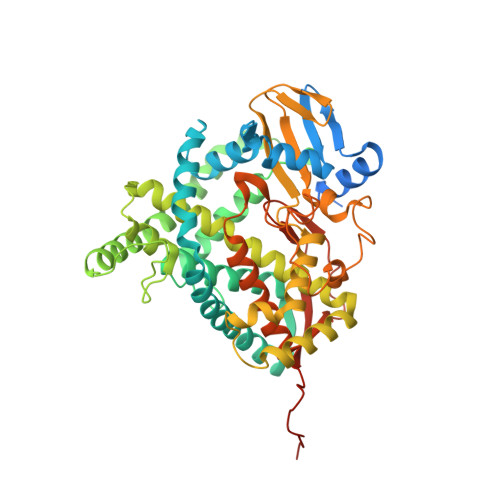Structural basis for plant lutein biosynthesis from alpha-carotene.
Niu, G., Guo, Q., Wang, J., Zhao, S., He, Y., Liu, L.(2020) Proc Natl Acad Sci U S A 117: 14150-14157
- PubMed: 32513704
- DOI: https://doi.org/10.1073/pnas.2001806117
- Primary Citation of Related Structures:
6J94, 6J95, 6L8H, 6L8I, 6L8J - PubMed Abstract:
Two cytochrome P450 enzymes, CYP97A3 and CYP97C1, catalyze hydroxylations of the β- and ε-rings of α-carotene to produce lutein. Chirality is introduced at the C-3 atom of both rings, and the reactions are both pro-3 R -stereospecific. We determined the crystal structures of CYP97A3 in substrate-free and complex forms with a nonnatural substrate and the structure of CYP97C1 in a detergent-bound form. The structures of CYP97A3 in different states show the substrate channel and the structure of CYP97C1 bound with octylthioglucoside confirms the binding site for the carotenoid substrate. Biochemical assays confirm that the ferredoxin-NADP + reductase (FNR)-ferredoxin pair is used as the redox partner. Details of the pro-3 R stereospecificity are revealed in the retinal-bound CYP97A3 structure. Further analysis indicates that the CYP97B clan bears similarity to the β-ring-specific CYP97A clan. Overall, our research describes the molecular basis for the last steps of lutein biosynthesis.
Organizational Affiliation:
Chinese Academy of Sciences Key Laboratory of Photobiology, Institute of Botany, Chinese Academy of Sciences, Beijing 100093, China.















